Home › Forums › The Industrial Era › New York Marble Cemetery and Inwood Marble
Tagged: Dan Mullane
- This topic has 20 replies, 7 voices, and was last updated 2 years, 7 months ago by
Thomas Casey.
-
AuthorPosts
-
-
September 13, 2021 at 5:42 pm #2151
There is a curious cemetery downtown between 2nd and 3rd Streets, between Bowery and 2nd Ave. It is called the New York Marble Cemetery and it is a city landmark that was incorporated in 1831. It is the oldest non denominational cemetery in the city. It has a website with a photo tour and below is a screenshot:
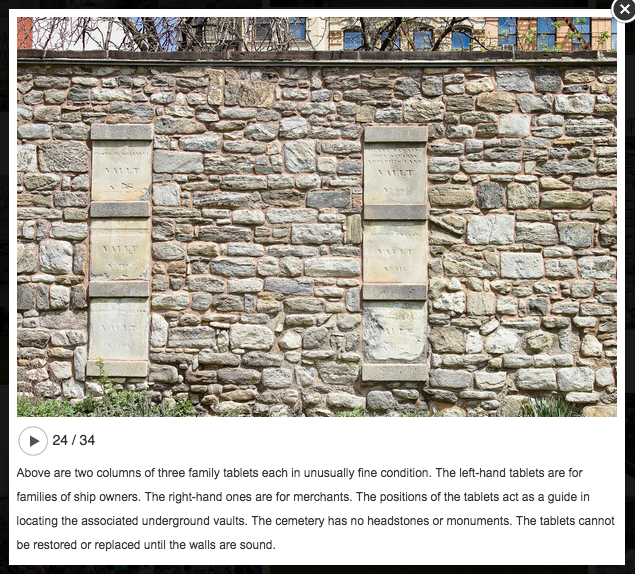
The website states that the cemetery was founded by someone named Perkins Nichols and that the structure is built out of “Tuckahoe Marble.” It describes the stone like this:

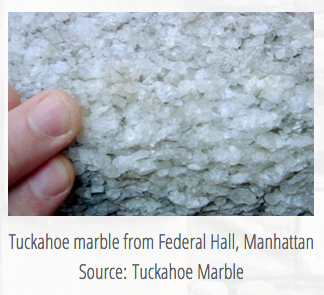
The description made me think of the Inwood marble outcropping that you can see and touch on the north side of Isham Street:

It just looks like ordinary gray rock, but if you scratch it or rub it, it crumbles and reveals a bright white marble. It takes the gray color after it is weathered by the elements.
I did a little research on Perkins Nichols, the founder of the cemetery. It turns out in 1817 he purchased some land in today’s Inwood from a man named Amasa Spencer, who operated a marble quarry there. But not only was Nichols quarrying his marble here, he was also processing it here. He operated a marble mill on the Spuyten Duyvil Creek. The below print by Jacques Milbert depicts the mill building. The view is from Spuyten Duyvil Hill looking east and the creek flowed where West 230th Street is today.
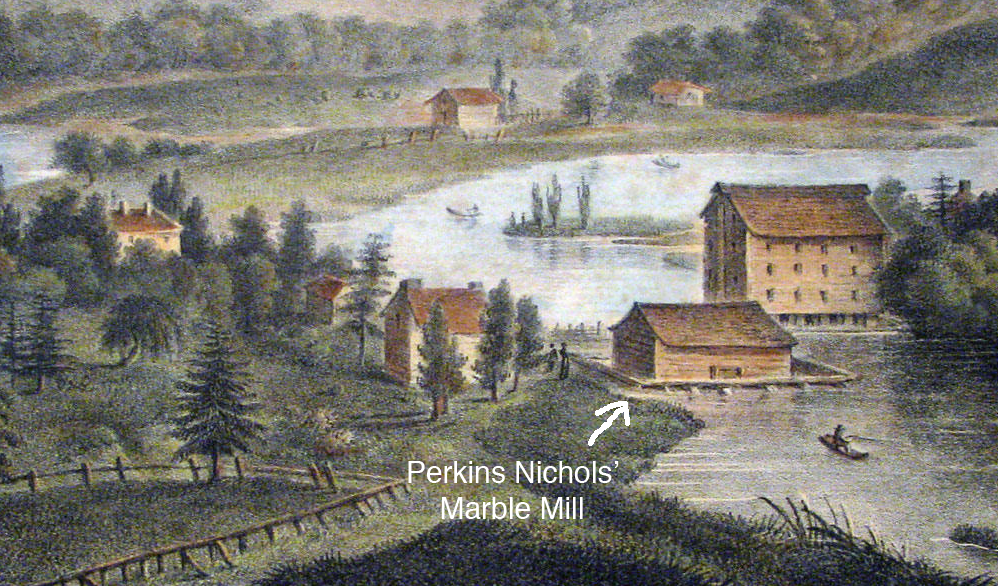
So add the New York Marble Cemetery to the list of landmarks built with Inwood Marble!
-
September 13, 2021 at 5:52 pm #2152
Cool discovery Nick!
-
September 13, 2021 at 11:45 pm #2153
Nick,
Is the Perkins Nichols Mill hidden behind the building on the Kingsbridge, looking west?
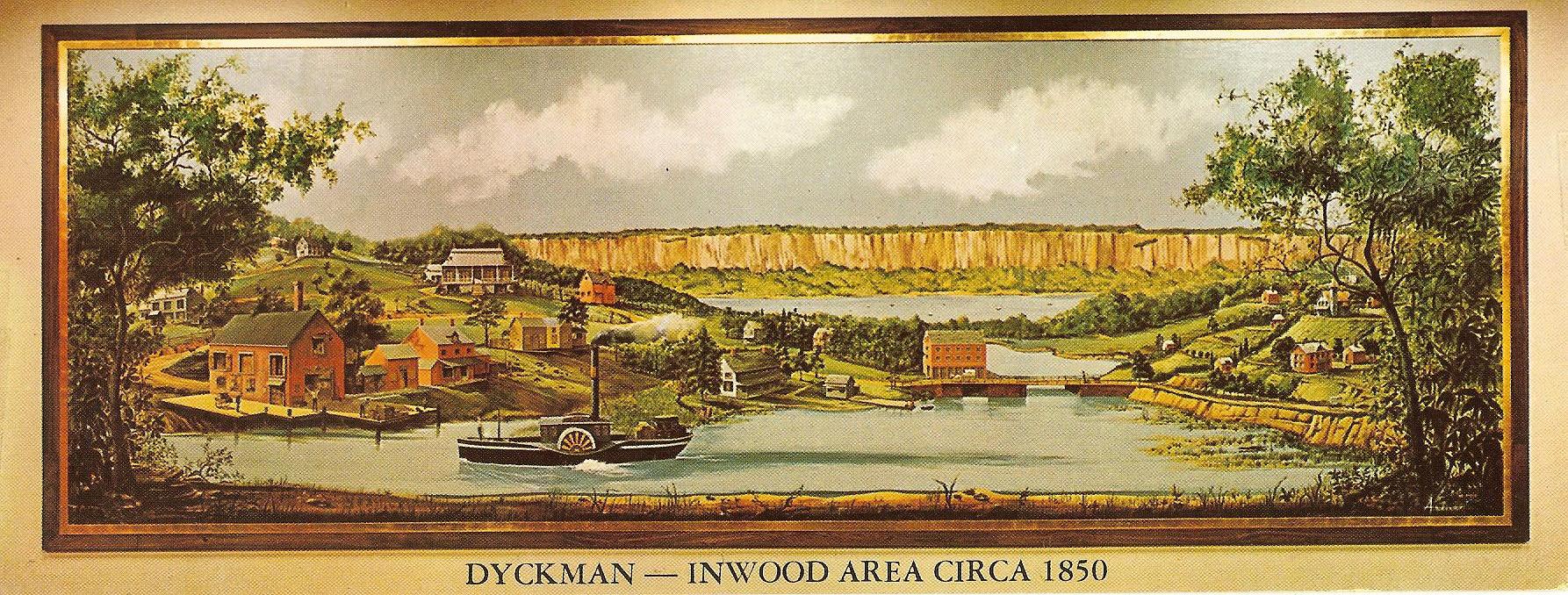
-
September 14, 2021 at 8:33 am #2154
I think the Perkins Nichols marble mill must have either burned or been torn down by 1850. It was on the northern bank of the Spuyten Duyvil Creek, so about where Corlear Ave and W. 230th intersect today. The building on the southern end of the Kingsbridge was originally Alexander Macomb’s gristmill.
That is a very nice panorama. Who painted it?
-
September 17, 2021 at 12:31 pm #2155
I came across some more interesting information about proposed uses for Inwood Marble and the fate of Nichols’ marble quarry.
First, it seems that the marble was initially called “Kingsbridge Marble” and despite its reputation as a weak and crumbly stone, it was advertised as “suitable for buildings.”
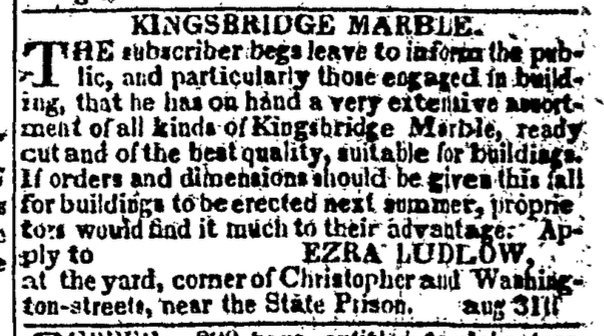
NY Evening Post, 10/2/1818 Ezra Ludlow was a local landowner–of the Ludlow family for which the Ludlow neighborhood of Yonkers is named. There were some different proposals for how to use the marble reserves over the years. In 1820, an interesting proposal was considered:
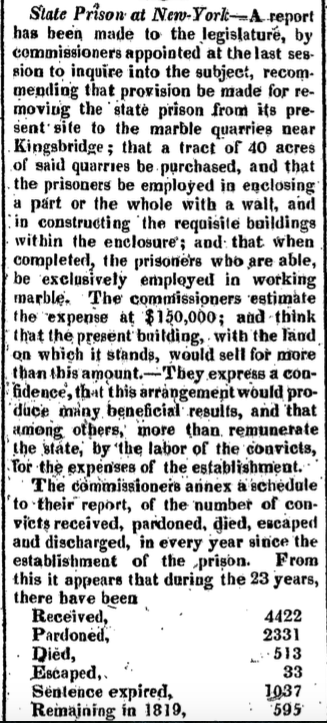
2/23/1820 New York Gazette First time I’ve heard of prisoners building their own prison! Peter Cooper proposed using the quarries to expand the piers and put unemployed New Yorkers to work in an economic downturn:
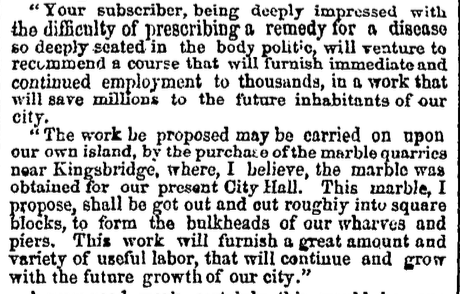
2/10/1855 NY Evening Post Perkins Nichols’ quarry and mill doesn’t seem to have done great business–at least not enough to save Nichols from bankruptcy in 1839.
This 1836 map gives an idea of where the quarry was located. Marble Hill is near the top, where the Kingsbridge crossed the Spuyten Duyvil Creek.
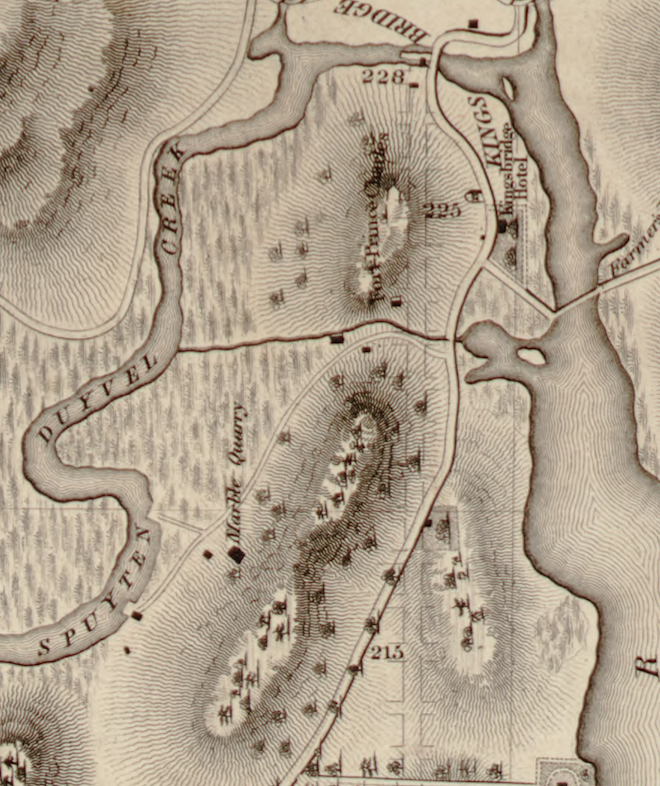
-
September 17, 2021 at 1:03 pm #2156
The 1850 mural of Dyckman- Inwood came from a 1990’s flyer from a local bank. I do not have the flyer anymore.
-
September 17, 2021 at 5:30 pm #2157
It should be assumed in reading the above and other works that the term Kingsbridge Marble, Inwood Marble and Tuckahoe Marble can be and are used interchangeably. They are all basically the same rough large grained textured white marble. In the map above the actual site for the early marble quarry’s and mills was located where the black line runs across Marble Hill between the words Marble Quarry and Fort Prince Charles. Water was divetred from the Harlem River and using tidal actions to run the mills. The location is approximately the location today of the Harlem Ship canal. The Bolton brothers were one of the earliest to set up a marble quarry and mill. I should also be noted that the State Prison at Ossining aka Sing Sing was built by prisoners out of local Ossining Inwood Marble. Perhaps one could called it an early ‘green’ building project using local material and no carbon footprint.
The best source on the Marble Quarry at Kings Bridge was written by Lawrence N. Conklin in 1997. Years ago I had stopped in the rare gem store owned by Lawrence Conklin. I mentioned I was with the Kingsbridge Historical Society and he then set to telling me about his research and gave me a copy. Here is a link to his research titled ” Kingsbridge, and early quarrying district on Manhattan Island”.
If you were around when they built the new Allen Pavilion Hospital on Broadway south of 225th Street Bridge the digging of large footings for the new building exposed the white Inwood marble clearly visible from the IRT #1 train. If you have traveled in Yonkers on Central Avenue above and below Tuckahoe Rd you are passing the Tuckahoe marble quarries. You can view the quarry sites most on the west side of Central Ave above Tuckahoe Rd where the stores and shopping centers are set back in the property. Here on the Spuyten Duyvil and Riverdale Ridge over looking the Hudson there were important lime kiln’s remnants of one still extant. The Inwood marble was burned to create lime that was need to make cement and used to build many early building in old New York. This was a very early manufacturing process in the area using raw materials for the building industry.
-
September 17, 2021 at 5:54 pm #2158
I’m curious whether this is the same white, crumbly “stone” that is in Riverdale Park at the outlook overlooking the low-tide-visible pier at 246th street. If so, I wonder if there was also quarrying done in Riverdale Park.
-
September 17, 2021 at 6:21 pm #2159
Yes its the same Inwood Marble. Veins of it can be found in Riverdale. Have not read of it being quarried here but small quantities might have. But the real large deposits and quarries was found in upper Inwood/Marble Hill.
Scattered around the lime kilm above 232nd street at the parks edge over the RR tracks can be found large amounts scattered likely from the early lime manufacturing process.
There were large deposits east of the Riverdale ridge basically east of Broadway in the area what today is the Van Cortlandt parade grounds. It was the glacier action that wore down the soft Inwood Marble and gave us the Van Cortlandt Parade grounds we know today. The hard Bronx gneiss is what was left after the glaciers and form the Riverdale ridge and Van Cortlandt ridge where Vault Hill was built. The late Sydney Hornstein the geologist emeritus of the Mus of Nat History had a saying regarding our local rocks that “the Bronx is Gniess and Manhattan is full of Schist”.
-
September 17, 2021 at 6:24 pm #2160
Ha. Yes, I do know that saying, but didn’t know its author.
Amazing to learn how we got the Van Cortlandt Park lowlands.
-
September 17, 2021 at 6:30 pm #2161
That’s a great line and the article Peter shared is really good. If you want to see some great images, buy the back issue of the “Mineralogical Record” where the article first appeared-Nov. 1997.
Here is the AMNH’s geological map and it shows that Inwood Marble could be found right where you say, Zach.
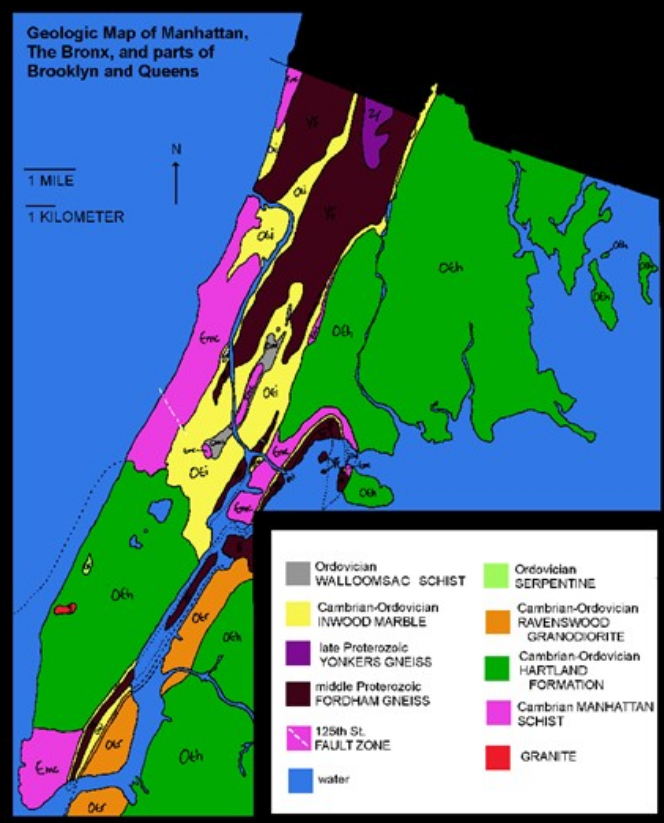
Frederick Van Cortlandt owned a quarry along the Hudson River in the early 1800s and perhaps earlier. I don’t know exactly where it was located, however.
-
September 17, 2021 at 6:54 pm #2162
Thank you, Nick and Peter for your time in researching all this interesting information. Also, thank you Thomas for presenting us with that pretty mural.
-
September 19, 2021 at 8:59 pm #2163
You’re welcome and I found some Inwood Marble in Riverdale Park today, actually a bunch of it right around the entrance at 232nd and Palisades Ave. I was walking along the path into the woods on what appeared to be sand but it was just a bunch of decayed marble. I could tell because there were intact marble chunks all around. Here’s a weathered piece:
It crumbles when you touch it and if you break it open you can see the white inside:
Incidentally, the water rushing down the hillside during hurricane Ida turned up a lot of material in the eroded gullies that lead to the Hudson River. Parts of the park seemed like they must of been dumping grounds in the late 1800s with all sorts of glass, metal and ceramics sticking out of the ground. My daughter found this one (a bottle from the DH Smith factory in Yonkers, circa 1870):

Advertisement in the Yonkers Statesman, 1870s -
September 19, 2021 at 9:12 pm #2164
Look what I found ! Burfeindt Brothers Bottle wire bottle stopper
-
September 19, 2021 at 9:13 pm #2165
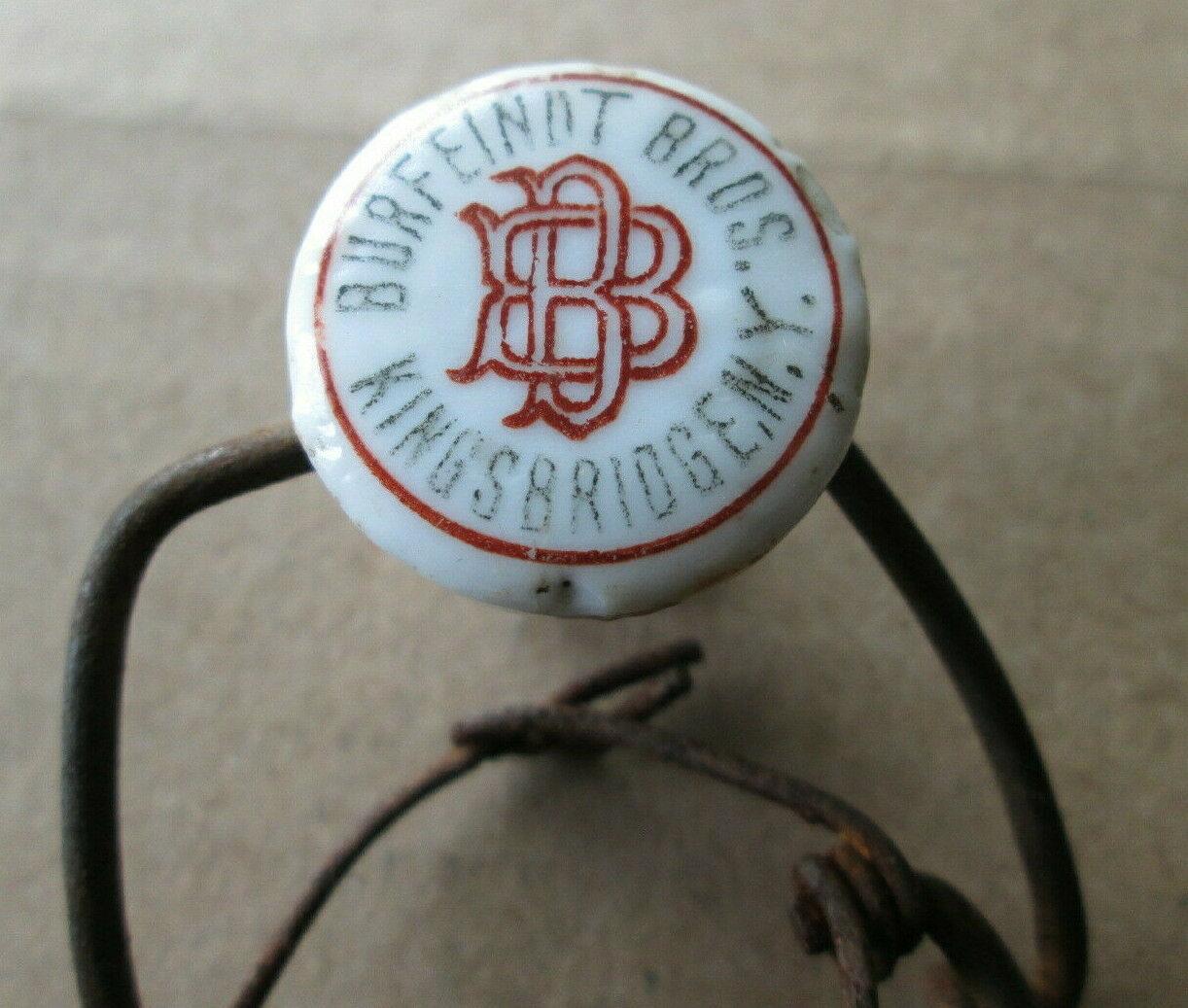
-
September 19, 2021 at 9:33 pm #2166

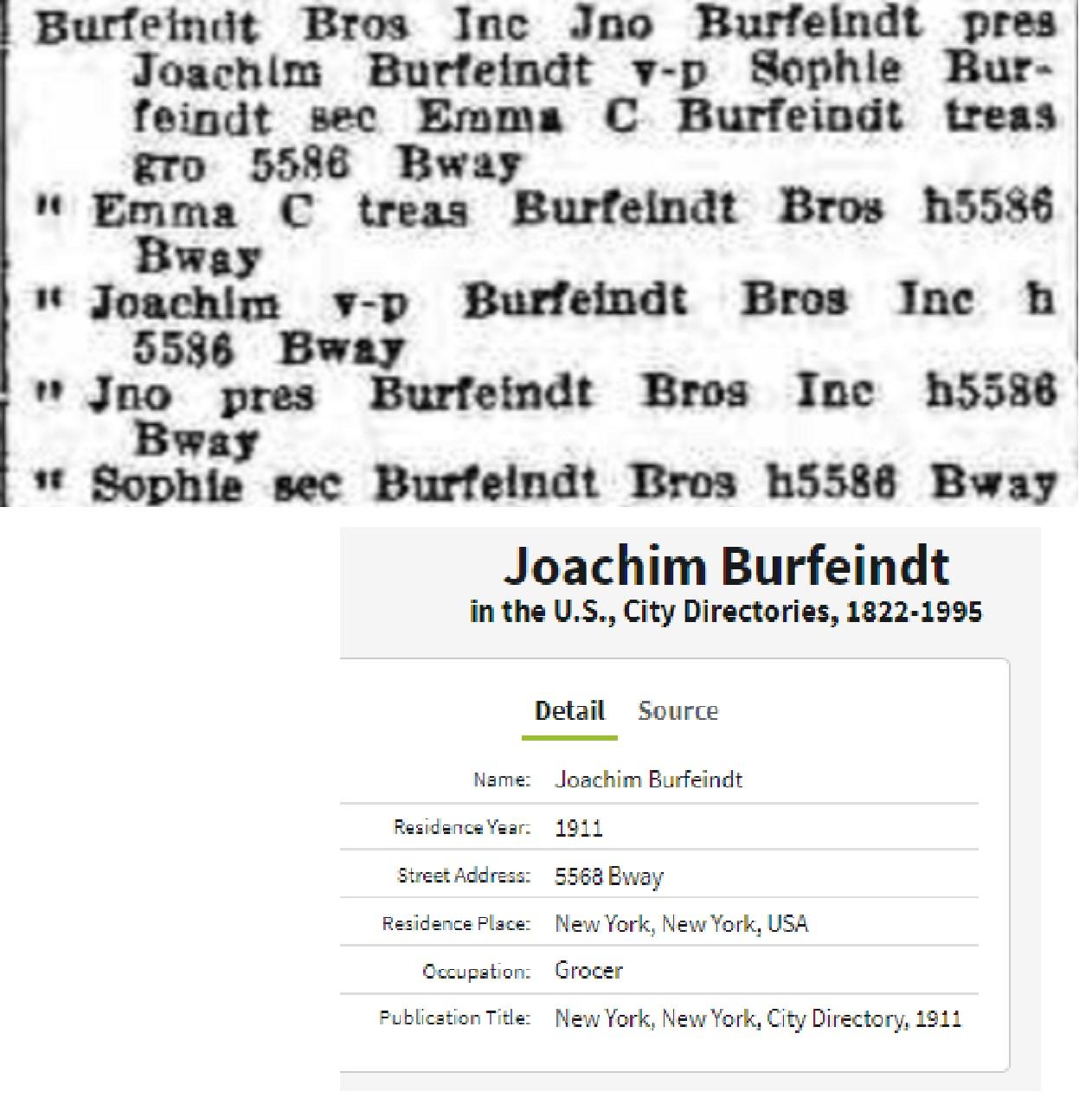
-
September 19, 2021 at 9:52 pm #2167
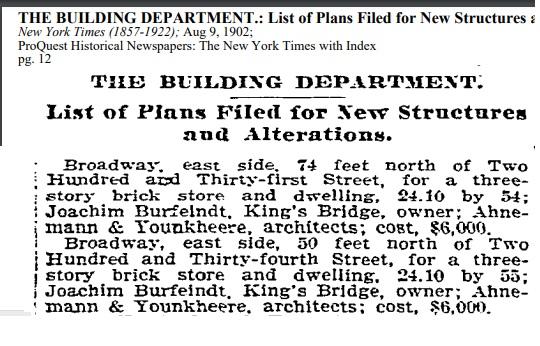


-
September 20, 2021 at 8:50 am #2168
Good find for sure. I had never heard of that company. From the description, the “dwelling and store” on 231st Street owned by Burfeindt seems to have been this one, which matches the dimensions and location provided.
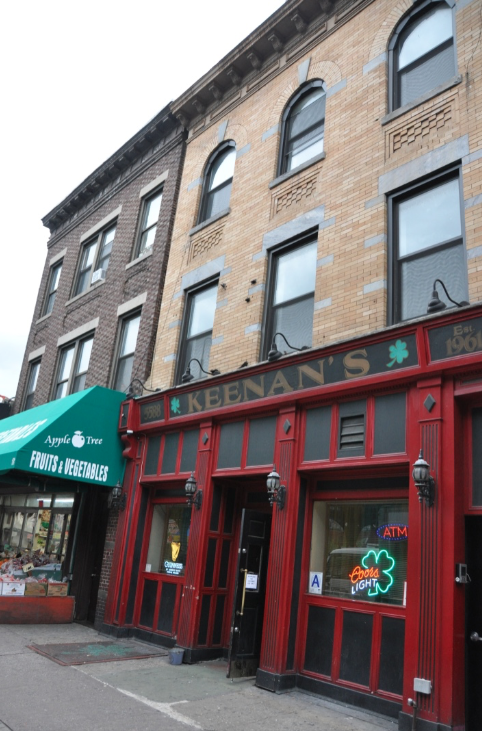
-
September 21, 2021 at 4:29 pm #2169
Quick question–I saw the name Ahnemann and Younkheere in the above note from the Building Department and wanted to ask if there was a Lumber Yard on Bailey Avenue by that same name.
-
September 21, 2021 at 7:50 pm #2170
Yes, there was:
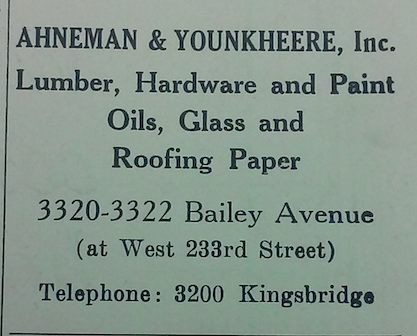 George Younkheere was a real history buff–the Curator of the Kingsbridge Historical Society. He also contributed to the Riverdale Press. The below is from a 1955 issue:
George Younkheere was a real history buff–the Curator of the Kingsbridge Historical Society. He also contributed to the Riverdale Press. The below is from a 1955 issue: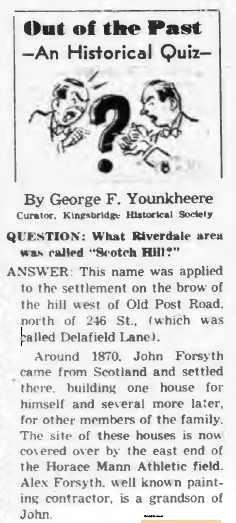
-
September 21, 2021 at 10:00 pm #2171
Nice find of the Ad for the Ahnemann and Younkheere firm on Bailey Ave
-
-
AuthorPosts
- You must be logged in to reply to this topic.